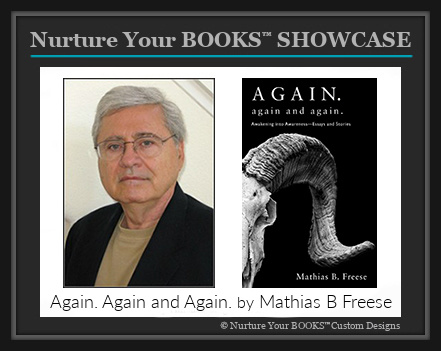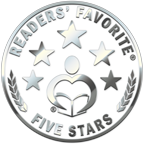This Mobius Strip of Ifs
Author: Mathias Freese
What if everyone lived within the inside of a box so thick that they could not see what was behind the corners or upper lid and never realizing what lies behind the confines of this box? What if you world was so fragile and breakable that all you see is what is right in front of you and not what is around you? What if you lived inside the shell an uncooked egg and each time you moved around just a little bit of the shell came apart and what you begin to see is not what others want you to see but what is really there? For the first time you view the world, slowly at first and then when the entire shell cracks and is no longer protecting you within its shell you begin to see, question, listen and explore the amazing world that has been hidden from you for so long? What if students were encouraged to asked questions and received more than just the expected or canned answers written in the teacher’s edition of a textbook? What if students were actually taught not spoon-fed and required to seek what is deeper than what appears on the printed page of a textbook that is outdated as soon as it is printed. New information is recorded daily on the net, new research is done everyday and textbooks are only current until a new one is written and more information added which outdates the first but soon that one too.
Personal awareness just how much value do we place on it. Just how do we deal with disappointment? This Mobius Strip of Ifs refers to an essay the author wrote titled “Herbie,” chosen to appear in an anthology in a magazine. But, sometimes misprints and mistakes are made and are corrected. Other times some go unnoticed or just left the way they are because fate you might say steps in a plays its own hand. The editor of Graffiti informed the author that his short story titled “Herbie,” published in that magazine was listed in Martha Foley’s The Best American Short Stories of 1975. It was placed in the section “Distinctive Short Stories of 1974.” Thinking about which authors whose company he would be in the author then realized something else upon closer look. Excited and living in his own world of personal blind ambition and like some self-absorbed he states he soon realizes that the name the article listed as the author was not his but that of H.T. Kirby Smith. Writing the Martha Foley he received a reply. She was the founder of the magazine and apologized for her error, penned a formal note but passed away before rectifying the error. Regardless of the error in authorship it does not negate the fact that he wrote it and it was acknowledged for its excellence. The author instead of dwelling on this decided to continue writing, learned from it and used it as a valuable validation of his writing ability. What if they never made the mistake? Would he have come to the same revelations he reveals in this book? “A Mobius Strip is essentially a ribbon with a twist,” as, stated in the foreword of this book. Life does not provide us with a clear path without its on snags, twists and turns and the definition certainly fits the many situations and experiences the author shares with the reader. Imagine if we explored life and allowed ourselves to find out more about the “possibilities outside of our perception.”
What if teachers were allowed to teach without the constraints of curriculum guides, paperwork and text? What if students were encouraged to become more aware of whom they are and what they want to be rather than what is expected of them? What if students were not consumed with grades, getting ahead, money and become their own person without being victims of the world created for them by their parents and friends. What if teachers like our author did not become frustrated by having to tell his students rather than have them inquire? What if he could actually engage them and not watch them take notes or hang on his every word? What if educators actually challenged their students and allowed them to master things on their own? Teachers as he relates seen confined, distrusted and are not empowered.
Aging has taken its toll in the author as it does with most people. Defining and observing the changes within his physical appearance, his attitude and perspective is shared with the reader in Chapter 2. No one asks to age or get older. You hope to but the changes we see are not always what we want to accept but we have no choice. Two books published is definitely a great accomplishment. Making something of his life he certainly did. Sharing with the reader that he overcame obstacles, adversity and life’s difficulties might encourage more to take on his way of thinking and understand the meaning of his What ifs. Chapter 3 he shares his view on how he lives his life untidy and a great email from a student. The Unheard Scream is a letter that he addresses to all of his students trying to explain what they should be looking of in life, searching for their own answers, not taking just what we give them as gospel and learning to think about ” what they will do here on earth?” Have you ever asked a young person what or where they see themselves in ten years? You might be surprised of not so surprised at the answers you will get.
An artist creates a picture or painting defining his work through his art. A therapist the author states should be well read in art, music and literature. The many definitions and references to his vocation are interesting as he sates as a therapist he is an outsider. I often get the feeling as I read each essay that the author places a different part of him within the framework or structure of the theme presented. Throughout this chapter he allows the reader to share his profession, explain his role and how the therapist uses himself as an instrument. As the layers unfold you begin to feel that each part is a separate scene in a movie or special documentary dealing with each aspect of this thinking, vocation and perspective on life. As he tells the reader about the impact a client has on him and how the client is the best facilitator of information helping the therapist understand not only the needs of the client but the therapist too. The Ten Canons explained on pages 36-38 are almost ten ways to deal with pain, remorse, lies and self-esteem.
Mr. Freese includes some well written, straightforward essays that express his viewpoints and thoughts on many topics. I don’t think he is trying to sway the reader into thinking his way or convincing you that you have to agree with his point of view. Frustrated with the teaching profession he airs his views and explains in many chapters that students were primarily concerned with grades, when and if they will graduate and what monetary value can they attribute to the careers that their parents might have chosen or someone at the school might have suggested. He included essays on Buster Keaton, Peter Lorre, Orson Welles and Kazantzakis. For lovers of movies and books you might want to read “Babbling Books and Motion Pictures.” What if what you were taught as a child was wrong and has no bearing on what you need to help you in life as an adult? Simply stated in one sentence: The task of each one of us is to be free of the other and ultimately free of one’s own inner constraints.” Self-awareness and thinking for yourself without being programmed by the schools, parents and your friends would be quite compelling and interesting to see how students would handle being able to think more critically and intuitively on their own.
Essays about his family discusses his early life, his childhood, his middle years and an aging grandparent, a daughter with Chronic Fatigue and Immune Syndrome and essays that reflect the many stages of his life. Uncle Seymour who had a powerful impact on him and who allowed him to finally learn to accept and express his own thoughts and emotions guiding him to become a therapist. Added in we learn about his divorce, his thoughts about Freud, experienced as a therapist and how he came to find and learn his own personal truths.
The second half of the book Metaphorical Noodles includes the work of many actors and filmmakers who strived for the same things students should in school artistic or educational freedom. In the movie business directors and producers strive to create movies as they see it or the writer sees and often the actor’s thoughts and creative input are pushed aside. Within the third section we learn more about his daughter Caryn her struggle with Chronic Fatigue Immune Syndrome and taking her own life. Losing his wife in 1999 in a car accident and his Grandmother Fanny whose story you need to read and his Uncle Seymour whose many actions described will definitely surprise the reader. In I Had A Daughter Once the author shares his raw and inner emotions about losing his daughter. “Cameras as Remembrances of Things Past,” allows the reader to understand the power of the lens and how taking pictures can recreate moments in your life, family history and allow you to relive them everyday you look at them. To me it keeps the person alive in your heart and mind giving you your history. What if the cameras and reels of film that you have in your home could speak for you and create their own movie of your life? This final section called Seawall allows the reader to hear the author’s thoughts and share his feelings about his children, losing his wife and his own personal losses allowing the reader to reflect on their own.
But, there are positives in his life and his son Jordan brings the light out in the author’s eyes as he is watching him write a screenplay, decide on who is and is watching him find his way as an artist. The final chapter I would like to reflect on is I Really Don’t Know Me and I Really Don’t Know You as the author in this chapter reflects on his life, his downward spiral toward extinction as she says and realizing that he and is son are blind toward each other. Relating how he walked with his Uncle Seymour to the Jewish bakery to get a rye bread reminded me of sharing a rye bread as a child with my grandfather. What happens to the rye that his uncle bought was traumatic for the author and the total incident will explain why when you read it. He was also the cause of destroying his sense of trust when he tried to teach him how to swim and what happens will surprise you as he thought he was going to have swim lessons but instead he almost drown. Reflections on Rummaging rounds out the book and is the final essay is a final accounting of everything he reflects on in this book while sitting in his garage facing many boxes filled with his life’s history. But, this book allows you to rummage through the mind of this therapist, father, complex man and try and understand your own Mobius Strip If’s? What if we all thought the same way? What do you think would happen?





